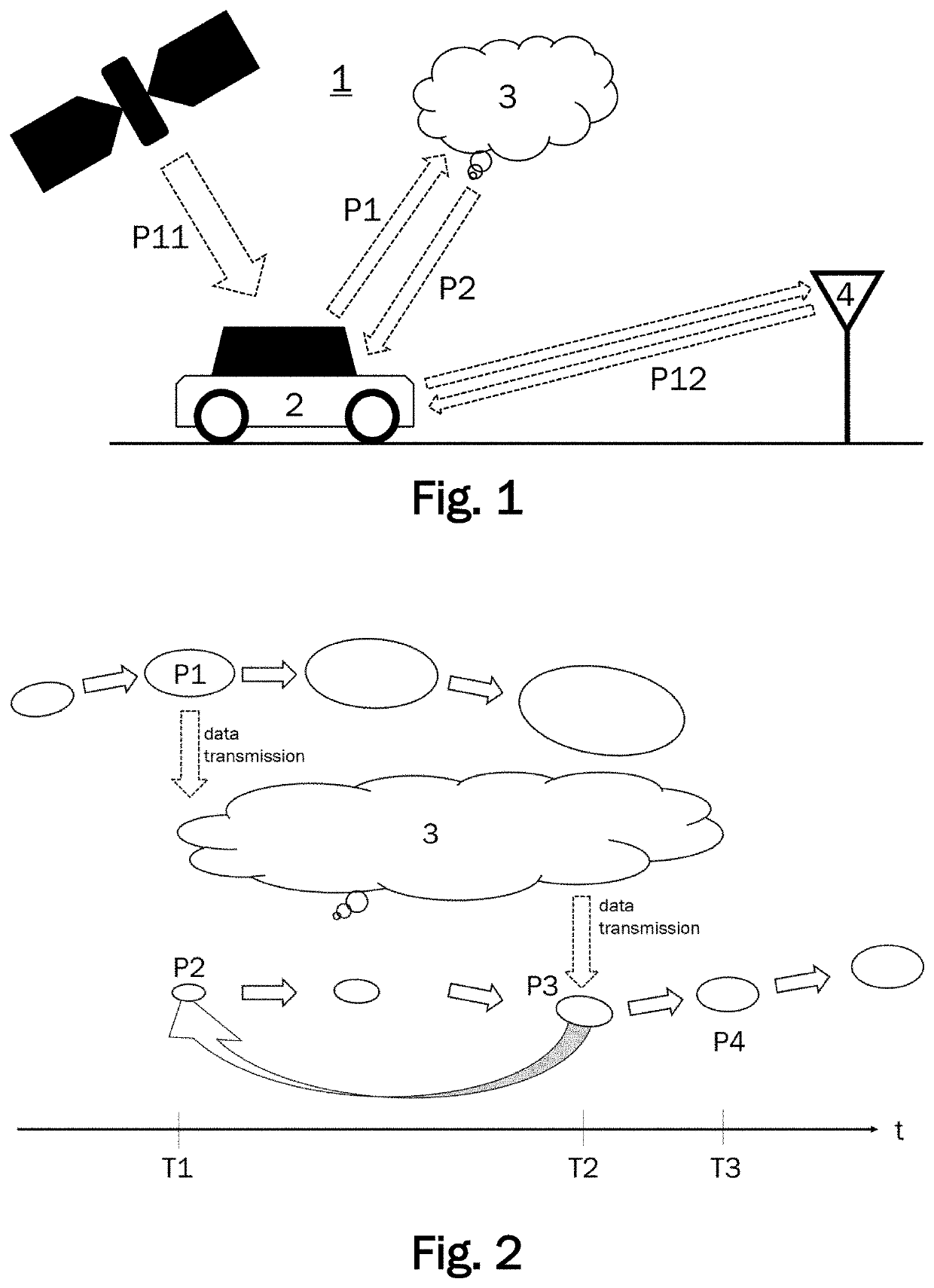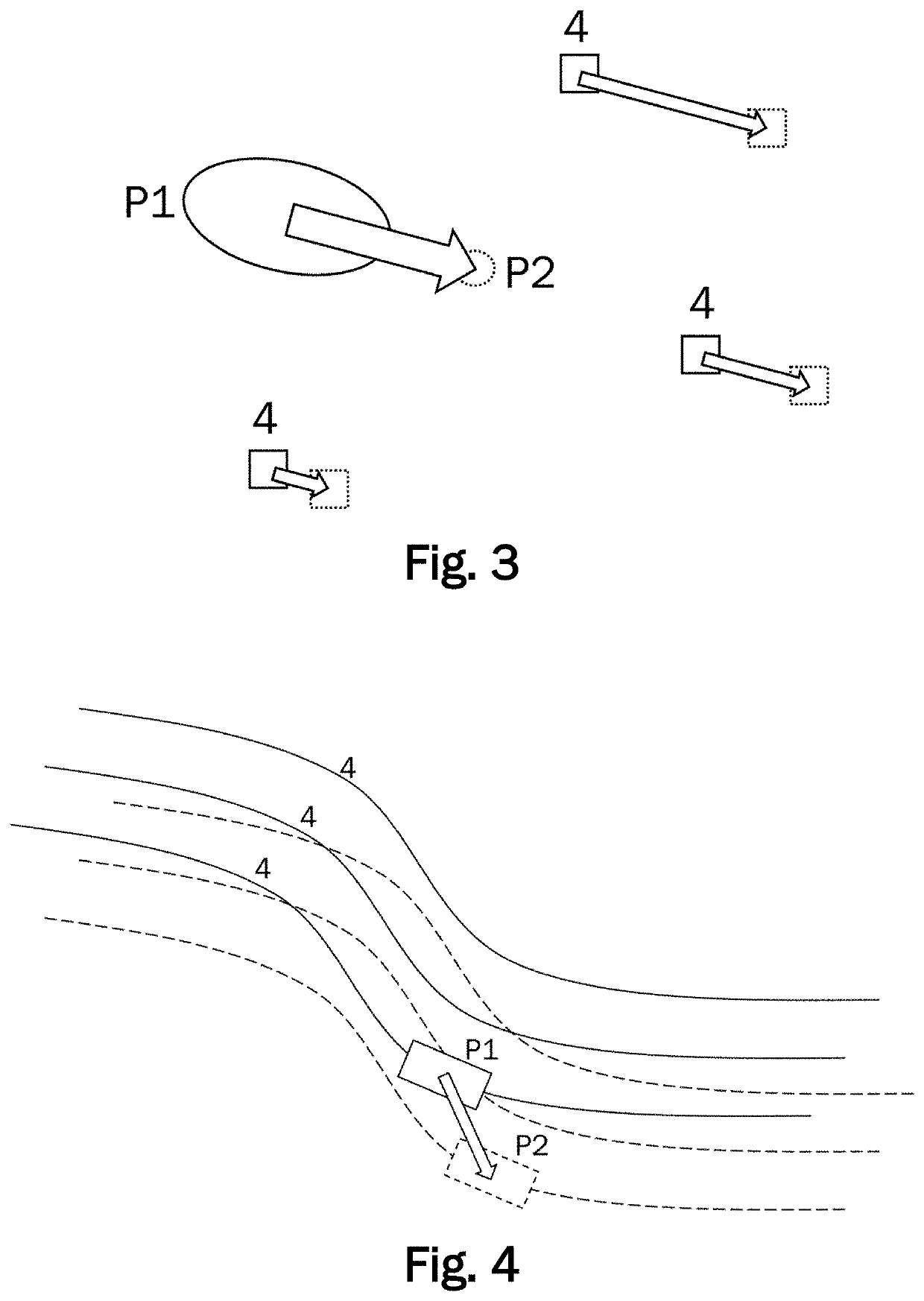Method for localizing a vehicle
a technology for localizing vehicles and vehicles, applied in the field of methods and systems for localizing vehicles, can solve the problems of low accuracy of first position data, inability to accurately calculate second position data, and inability to accurately detect the position of the vehicle, so as to increase reduce the computational effort, and improve the accuracy of position information.
- Summary
- Abstract
- Description
- Claims
- Application Information
AI Technical Summary
Benefits of technology
Problems solved by technology
Method used
Image
Examples
Embodiment Construction
[0039]FIG. 1 schematically illustrates a system 1 for localizing a vehicle 2. The system 1 comprises a server 3 and a positioning device arranged in a motor vehicle 2. The server 3 may include any suitable server or computing device and may be located remotely from the vehicle 2 (e.g., in a cloud computing system or other suitable server or server system remotely located from the vehicle 2). The vehicle 2 has a control system for autonomous driving. The vehicle 2 can be described as a client to the server 3 which functions as a host serving a plurality of clients. The server 3 may be implemented in a cloud. Thus, the hardware associated with the server 3 does not need to be localized at a single physical location. The term server 3 rather describes the functional aspect of providing a data processing service which can be accessed by the clients via a network.
[0040]The server 3 comprises a first communication unit for receiving position data from the vehicle 2 and for sending positio...
PUM
 Login to View More
Login to View More Abstract
Description
Claims
Application Information
 Login to View More
Login to View More - R&D
- Intellectual Property
- Life Sciences
- Materials
- Tech Scout
- Unparalleled Data Quality
- Higher Quality Content
- 60% Fewer Hallucinations
Browse by: Latest US Patents, China's latest patents, Technical Efficacy Thesaurus, Application Domain, Technology Topic, Popular Technical Reports.
© 2025 PatSnap. All rights reserved.Legal|Privacy policy|Modern Slavery Act Transparency Statement|Sitemap|About US| Contact US: help@patsnap.com



